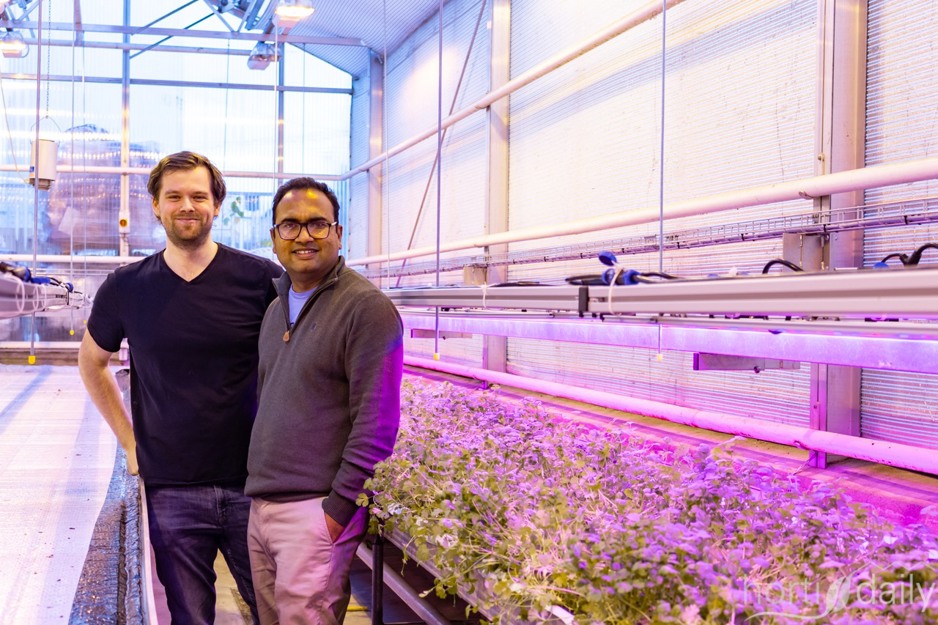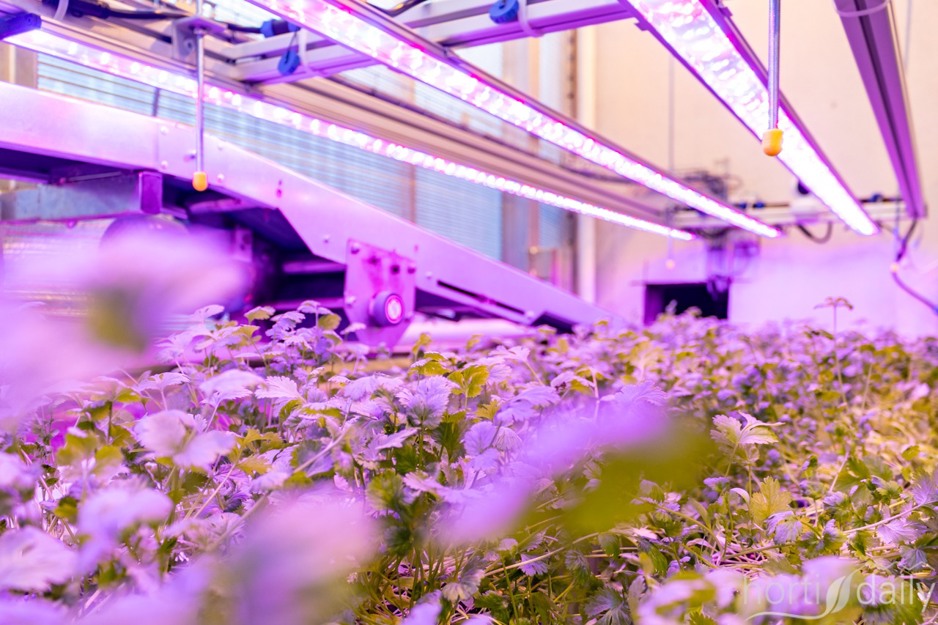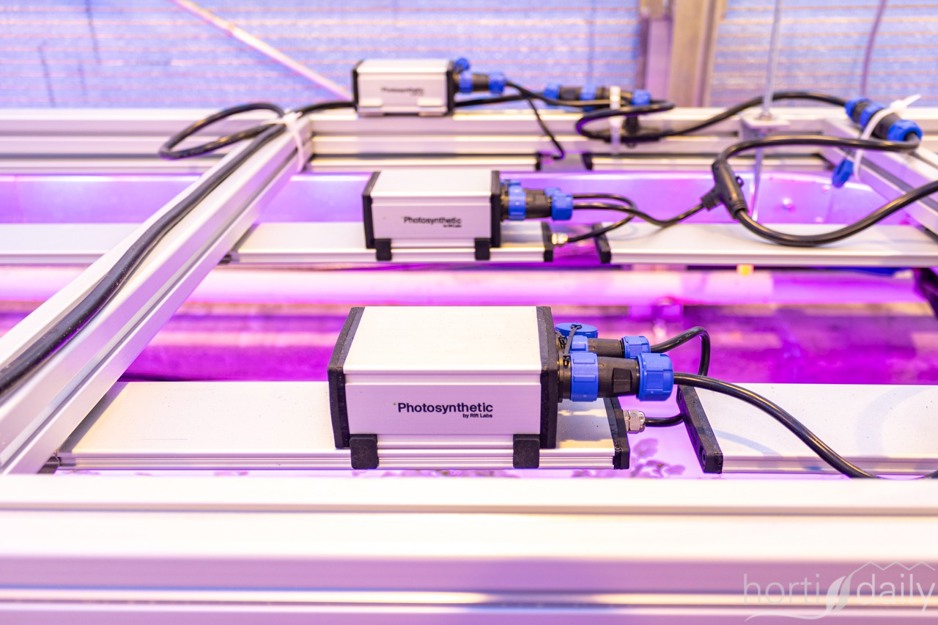Norway: “We’re using this trial to showcase the benefits of dynamic lighting”
"Switching from HPS to LED lighting can result in energy savings of 50–70%. In our trials, we've demonstrated an energy efficiency of 3.5 to 5 micromoles per joule, outperforming many of our competitors, who often achieve around 3.3 micromoles per joule at best," says Halvard Aagaard, CEO of Photosynthetic, a Norwegian lighting manufacturer specializing in LED lighting for cinematic and horticulture purposes.
Currently, the supplier is trialing with Ravnsborg Gard, a greenhouse company that is producing potted herbs for the Oslo, and beyond, market. They are now trialing LED lighting which is applied as top lighting to measure the effect on its basil production. "This is our chance to demonstrate how our technology works in dynamic conditions. The core technology remains the same, but the form factor and specific features can be adjusted based on the grower's needs," Halvard tells.

Simen Sjølie and Rakibul Islam pictured at the trial facility
As Halvard explains, traditional HPS lights typically operate at an efficiency of 1.7 to 1.85 micromoles per joule, making LEDs a significant upgrade. This improvement is not only about energy efficiency but also about delivering tailored light spectra that enhance plant growth and optimize resource use.

Boosting plant quality and efficiency
Photosynthetics' lighting solutions are designed to provide a tailored light spectrum, optimizing the conditions required for each growth stage of crops. For growers like Ravnsborg, this level of customization benefits testing the efficiency and impact of LED lights on its products, and eventually, the energy bill. "The results we're seeing go beyond basic growth metrics. The tailored light spectrum allows us to improve the plants' color, flavor, and overall quality, critical for meeting market demands," says Rakibul Islam, Chief Scientist at Photosynthetic.
The technology also opens doors for experimentation. Ravnsborg is exploring how subtle changes in the lighting spectrum can influence the performance of different crops. "We can test various recipes and identify the perfect conditions for each variety. This flexibility is helping us expand our product range while maintaining high quality," says Simen Sjølie, Plant Scientist and Electronics Engineer at Photosynthetic.

Photosynthetic's LED lights

